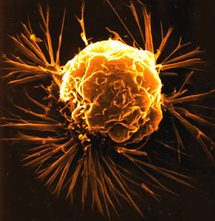
The findings could be used to predict outcomes in large groups of patients and one day allow doctors to better tailor clinical treatments, researchers said.
"The clinical implications of this concept are huge," said oncologist Ash Alizadeh, a co-senior author of the research, which will be published Wednesday in the Journal of the American Medical Association.
"If we're not able to design therapies to target this self-renewing population of chemotherapy-resistant cells, the patients will continue to have a tendency to relapse."
In past studies researchers have identified cells in a variety of cancers that resist treatment and contribute to relapse in animals, but scientists have yet to establish exactly how the process works in humans.
Alizadeh said researchers had "made very little progress in the treatment of AML (acute myeloid leukemia) over the past 40 years."
"We're still using the same drugs and therapies we've always used, even though about 70 percent of patients with AML die within five years of diagnosis," he said.
The study analyzed 1,000 AML patients in the United States, the Netherlands, Germany and Japan, and was funded by the National Institutes of Health, the Burroughs Wellcome Fund and the Leukemia & Lymphoma Society.
-----------------------------------------------------------------------
"The clinical implications of this concept are huge," said oncologist Ash Alizadeh, a co-senior author of the research, which will be published Wednesday in the Journal of the American Medical Association.
"If we're not able to design therapies to target this self-renewing population of chemotherapy-resistant cells, the patients will continue to have a tendency to relapse."
In past studies researchers have identified cells in a variety of cancers that resist treatment and contribute to relapse in animals, but scientists have yet to establish exactly how the process works in humans.
Alizadeh said researchers had "made very little progress in the treatment of AML (acute myeloid leukemia) over the past 40 years."
"We're still using the same drugs and therapies we've always used, even though about 70 percent of patients with AML die within five years of diagnosis," he said.
The study analyzed 1,000 AML patients in the United States, the Netherlands, Germany and Japan, and was funded by the National Institutes of Health, the Burroughs Wellcome Fund and the Leukemia & Lymphoma Society.
-----------------------------------------------------------------------









 Home
Home Politics
Politics









